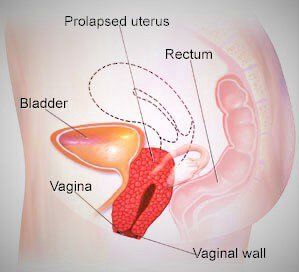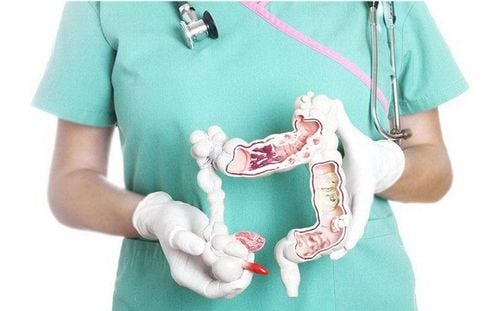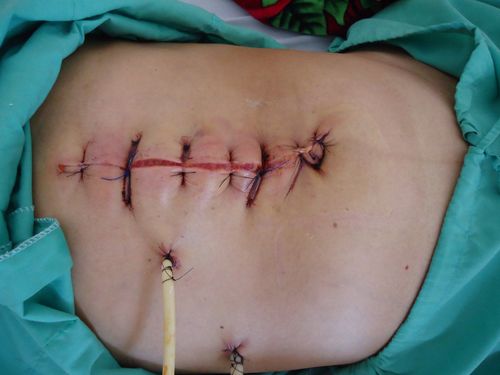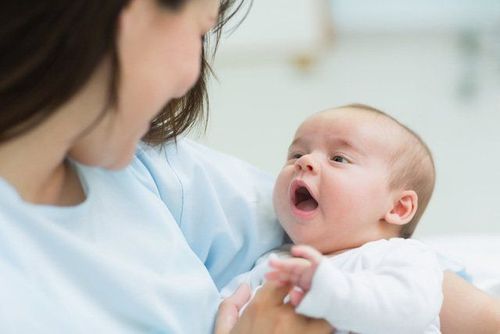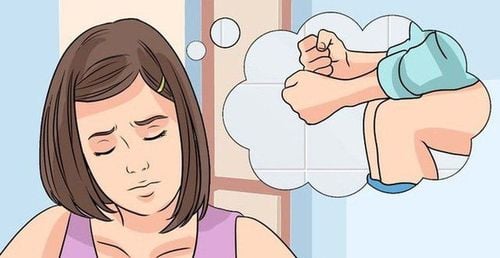This is an automatically translated article.
The article was professionally consulted by CKI Doctor Tran Thi Phuong Loan - Department of Obstetrics and Gynecology - Vinmec Phu Quoc International General Hospital1. What is postpartum hemorrhage?
After giving birth to a baby, a mother's body will undergo both physical and emotional changes. This can sometimes be beyond your control, and the postpartum period can be full of complicated changes. Here are some common complications after giving birth and how you can deal with them.
Like everything else that happens in life, a woman's body after childbirth has to face significant changes in the first weeks or even a few months after the baby is born. The postpartum period is also the time when a woman's body begins to recover and regain its pre-pregnancy shape, so it's important to be best prepared to deal with both physical and emotional changes. during this period.
Women can also face many health problems after giving birth, some of which are serious and have their own symptoms. Some common health problems at this stage include:
Postpartum infections such as uterine infections, bladder infections or kidney infections. Heavy bleeding after delivery Pain in the perineum area (between the vagina and rectum) Increased vaginal discharge Breast swelling, breast infection, or blocked milk ducts Stretch marks and constipation Urinary or bladder problems or bowel incontinence Hair loss Postpartum depression Discomfort during sex Difficulty getting back into pre-pregnancy shape
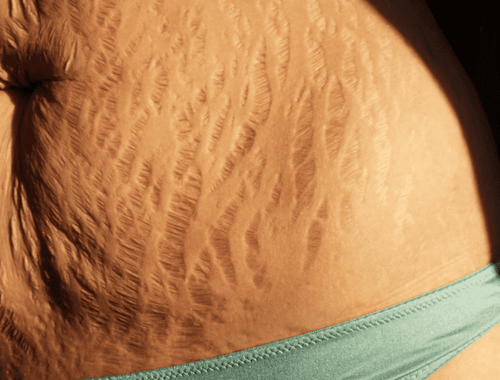
Sau khi sinh em bé, cơ thể người mẹ có thể sẽ xuất hiện nhiều các vết rạn da
Usually, bleeding is normal right after birth however, heavy bleeding or hemorrhaging occurs in only 2% of births and usually occurs after long labor, multiple births or when infected uterus.
Postpartum haemorrhage is the 3rd most common cause of maternal death during childbirth. Hemorrhage usually occurs because the uterus does not contract properly after the placenta is removed, or from a uterine tear, tear of the cervix, or the vagina. Immediately after the birth of the baby, mothers will be monitored to make sure the uterus is contracting as normal. If the bleeding is heavy, your midwife or doctor can massage the uterus to help it contract, or prescribe a synthetic hormone called oxytocin to help stimulate contractions. Your doctor may also do a pelvic exam to look for the cause of the bleeding or blood tests to determine if the cause is infection or anemia. In case of excessive blood loss, a blood transfusion is indicated.
If bleeding occurs 1 or 2 weeks after delivery, it may be because a piece of placenta is still in the uterus. In this case, the woman needs to have surgery to remove the remaining piece of placenta.
2. Uterine infection
Normally, the placenta separates from the uterine wall after birth and exits vaginally after about 20 minutes. If fragments of the placenta remain in the uterus, they can cause a uterine infection.
Infection of the amniotic sac during labor is also likely to lead to a postpartum uterine infection. Symptoms of a uterine infection are high fever, rapid heartbeat, abnormally high white blood cell count, swollen and tender uterus, foul-smelling discharge.... When the tissues surrounding the uterus become infected, They can make you feel extremely painful with a high fever. Uterine infections are usually treated with intravenous antibiotics, which are also used to prevent potentially dangerous complications of uterine infection such as toxic shock.
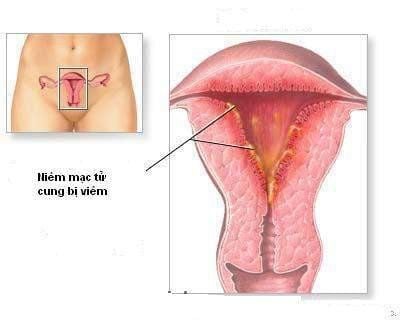
Nhiễm trùng tử cung thường được điều trị bằng kháng sinh theo đường tiêm tĩnh mạch
3. Some other types of infections are common after giving birth
Some other types of infections that can be encountered after delivery include:
Infections of the incision (in case of cesarean section): Postpartum wound infections have the same symptoms as other infections including redness and swelling. skin at the incision site, pain and pus discharge. To limit the infection of the incision, it is necessary to follow the doctor's instructions in the care of the incision after birth. Kidney infection: A kidney infection can occur when bacteria travel from the bladder to the kidney. Symptoms of a kidney infection can include frequent urination, high fever, pain in the back or side, painful urination, constipation.... After a kidney infection is diagnosed, doctors will prescribe the use of medications. one dose of an antibiotic orally or intravenously. Patients are also advised to drink plenty of fluids and are asked to take a urine sample at the start and end of treatment to screen for residual bacteria. Breast infection: A breast infection or mastitis is usually represented by a tender, red area on the breast or the entire breast. The cause of a breast infection can be bacteria, which causes fatigue, fever, chills, and cracked nipples. Breast infection does not affect the quality of milk, so the mother can still breastfeed from both breasts without fear of affecting the baby.
4. Perineal pain
For women who give birth vaginally, pain in the perineum (the area between the rectum and the vagina) is quite common. The soft tissues of the perineum can be stretched and torn during childbirth, causing pain to the mother. This feeling can be even worse with an episiotomy to keep the vagina from tearing during delivery.
During the postpartum recovery, the pain will gradually decrease. Bathing and applying cold compresses to the perineal area can help prevent infection and relieve pain. It is also important to clean after urinating to avoid bacterial infection from moving from the rectum to the perineum. Pain relievers can also be prescribed in this case if the woman feels too much pain.

Đối với những người phụ nữ sinh thường, tình trạng đau tầng sinh môn (vùng giữa trực tràng và âm đạo) là khá phổ biến
5. Increased vaginal discharge
Postpartum vaginal discharge, including blood and the remains of the placenta, has an unpleasant odor and usually lasts a few weeks after delivery. During the first few days postpartum, the discharge is bright red and then fades before it stops completely. The color of this discharge may also become redder in case of breastfeeding or vigorous exercise. The amount of discharge will gradually decrease after 10 to 14 days.
6. Swollen, painful breasts
About 2 to 4 days after giving birth, a woman's breasts will become very large, hard and painful. This engorgement may decrease as the baby begins to feed more regularly, or in non-breastfeeding mothers, the body stops producing milk and the breasts return to normal after about 3 to 4 days after birth. Mothers can ease the discomfort of engorgement by wearing supportive bras that fit well or by applying ice to their breasts. If they're breastfeeding, they can relieve the pressure by expressing milk (by hand or with a breast pump). For women who are not breastfeeding, it is advised to avoid hot baths and express milk. This will only stimulate the body to produce more milk and make their breasts fuller.
7. Stretch marks
Stretch marks manifest as ridges appearing on many areas on a woman's breasts, thighs, hips and abdomen during pregnancy. These stretch marks, caused by hormonal changes and stretched skin, may become more apparent after giving birth. Although stretch marks never go away completely, they will fade significantly over time. Many women believe that some special creams can relieve this condition, but in fact, their effect is not clear. About half of women will get stretch marks during pregnancy, no matter how good a cream they use.
8. Hemorrhoids and constipation
Hemorrhoids and constipation can be aggravated by the pressure of the expanding uterus and fetus on the veins in the lower abdomen, which is quite common in pregnant and childbirth women. Certain ointments, accompanied by a high-fiber diet and plenty of water, can help relieve constipation and hemorrhoids. A warm bath followed by a cold compress can also help relieve pain.
9. Loss of bowel and bladder control
Urinary incontinence or less commonly fecal incontinence can occur to some mothers soon after childbirth. Urine may leak out unintentionally, especially when laughing, coughing, or exerting itself. Loss of bowel and bladder control occurs often because the bottom of the bladder stretches during pregnancy and delivery. Normally, it takes time for the bladder muscles to return to normal. Pregnant women can also speed up this process with simple exercises at home.
Fecal incontinence due to lack of bowel control is often caused by stretched pelvic muscles causing them to weaken, tearing the perineum, and nerve injury to the perianal sphincter muscles during childbirth. Diarrhea is most common in women with prolonged labor after vaginal delivery.

Chứng són tiểu hoặc ít phổ biến hơn là són phân có thể xảy ra với một số bà mẹ ngay sau khi sinh con
10. Hair loss
During pregnancy, the levels of certain hormones skyrocket which prevent normal daily hair loss. However, a few months after giving birth, some women experience alarming hair loss. This is not too much of a concern, the amount of hair loss of nursing mothers is only equivalent to the daily amount of hair loss in non-pregnant conditions when hormone levels are normal and hair loss is only temporary. , do not draw attention to others.
11. Postpartum depression
Most women experience an episode of postpartum depression. Changes in hormone levels combined with heavier childcare responsibilities make mothers feel anxious. Postpartum depression is also present for only a few days or weeks. However, about 10-20% of women have persistent depression, which is characterized by extreme feelings of anxiety or hopelessness. Lack of sleep, changing hormone levels, and physical pain after giving birth can all contribute to depression.
12. Discomfort during sex
Resume sex only when you feel completely comfortable, both physically and emotionally, especially after a vaginal birth. Doctors recommend having sex only after about 6 weeks postpartum.
Mothers may feel uncomfortable, even painful sex up to three months postpartum, especially for those who are breastfeeding because breastfeeding lowers levels of the hormone estrogen which makes the vagina more fertile. should be dry.
Pregnancy and childbirth is a difficult but sacred process for any woman. After giving birth, a woman's body undergoes many changes. Some changes are normal, but others can be signs of serious, even life-threatening complications. Seek medical attention immediately if you notice any symptoms such as heavy vaginal bleeding, increasing and persistent pain in the vagina or perineum, high fever, chest pain, pain or burning when urinating....
Infants from 0 - 6 months of age are generally prone to respiratory diseases, gastrointestinal infections if they start eating solids early or storing and preparing milk not guaranteed. To protect children's health, parents should do well to exclusively breastfeed their babies for the first 6 months (if possible) and vaccinate on schedule. As soon as a child shows symptoms such as anorexia, fatigue, and crying, the child needs to go to the hospital to be consulted by a specialist for monitoring and treatment. The pediatric department at Vinmec International General Hospital is the address for receiving and examining diseases that infants and young children are susceptible to: viral fever, bacterial fever, otitis media, pneumonia in children. With a system of facilities, modern medical equipment, sterile space, minimizing the impact as well as the risk of disease spread, Vinmec will bring satisfaction to customers. and is highly appreciated by industry experts with:
Gathering a team of leading pediatricians: including leading experts with high professional qualifications (professors, associate professors, doctors, Master's degree), experienced, worked at major hospitals such as Bach Mai, 108.. The doctors are all well-trained, professional, conscientious, knowledgeable about young psychology. In addition to domestic pediatric specialists, the Department of Pediatrics also has the participation of foreign experts (Japan, Singapore, Australia, USA) who are always pioneers in applying the latest and most effective treatment regimens. . Comprehensive services: In the field of Pediatrics, Vinmec provides a series of continuous medical examination and treatment services from Newborn to Pediatric and Vaccine,... according to international standards to help parents take care of their baby's health from birth to childhood. Advanced techniques: Vinmec has successfully deployed many specialized techniques to make the treatment of difficult diseases in Pediatrics more effective: neurosurgery - skull surgery, stem cell transplantation blood in cancer treatment. Professional care: In addition to understanding children's psychology, Vinmec also pays special attention to the children's play space, helping them to play comfortably and get used to the hospital's environment, cooperate in treatment, improve the efficiency of medical treatment.
Reference source: webmd.com
SEE MORE
Care instructions for incisions / perineal stitches for pregnant women at home Unusual signs at the cesarean section Accumulation of old cesarean sections can lead to infertility secondary




